Abstract
Nitrogenase-dependent acetylene reduction, leaf, herbage, and root growth, and total nonstructural carbohydrate accumulation of alfalfa (Medicago sativa L.) and birdsfoot trefoil (Lotus corniculatus L.) were compared to learn how nitrogen fixation capacity and vegetative growth respond to partial (75-85%) or total shoot and leaf removal, and floral debudding. Treatments were imposed on greenhouse-grown plants during two successive harvest cycles.
Both species displayed an initial decline in total nitrogenase activity within 2 days of harvest and a subsequent recovery of activity after 10 to 21 days. Rate of recovery varied with the amount of leaf area removed. Periodic flower removal did not significantly alter total nitrogenase activity of either species compared with the unharvested controls. In the first harvest cycle, partial leaf area removal did not affect nitrogenase activity of alfalfa, but activity of trefoil was reduced 56%. In the second harvest cycle, partial leaf area removal reduced total nitrogenase activity of alfalfa 46% and that of trefoil 69%. Complete leaf and shoot removal reduced total nitrogenase activity of alfalfa 78% after the first harvest and 86% after the second harvest.
Recovery of nitrogenase activity after harvest paralleled leaf area expansion in both species. After the initial decline following the first partial harvest, total nitrogenase activity and leaf area of alfalfa increased 170 and 500%, respectively. After the initial decline following the second partial harvest, nitrogenase activity and leaf area of alfalfa increased 280 and 800%, respectively. Partly harvested trefoil and completely harvested alfalfa showed similar response patterns. Release of bud dormancy and leaf area expansion after flowering of nonharvested alfalfa apparently caused an increase in nitrogenase activity, but patterns of acetylene reduction and leaf area were not otherwise closely correlated in controls of either species. Decline and accumulation of total nonstructural carbohydrates in both species varied with defoliation treatment. Patterns of nonstructural carbohydrates in root tissue were not closely related to the changes in total nitrogenase activity caused by shoot removal.
Full text
PDF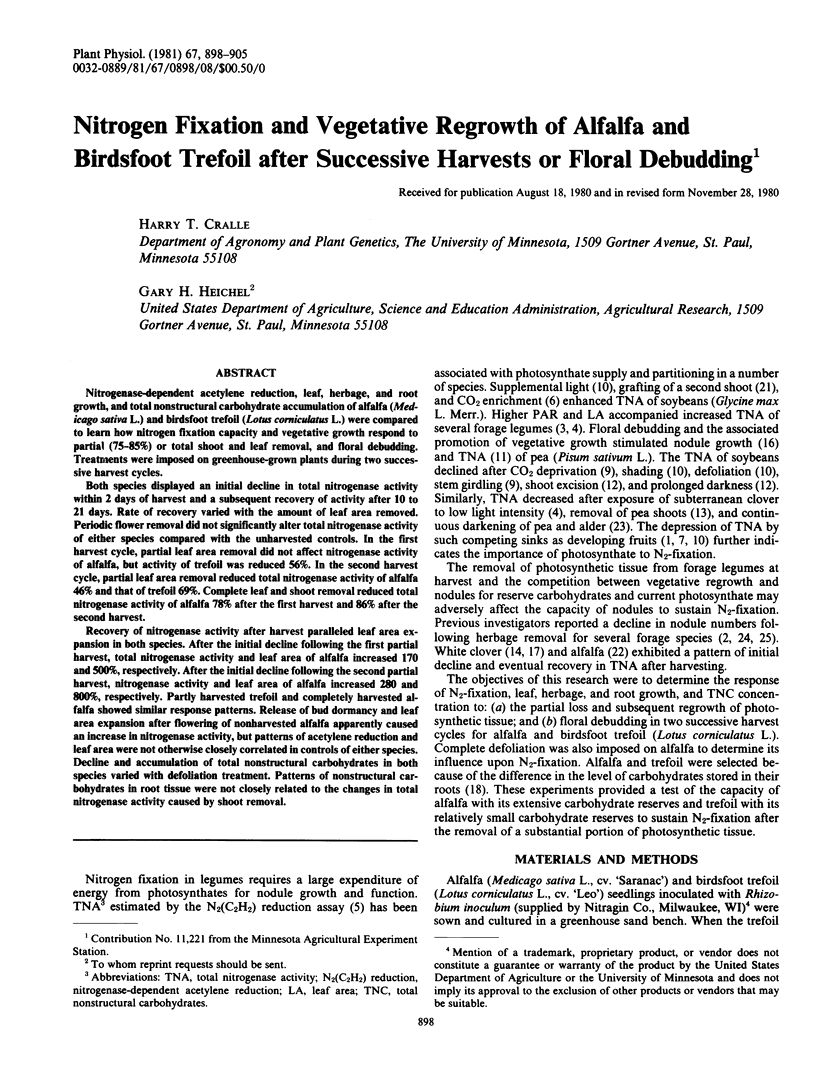

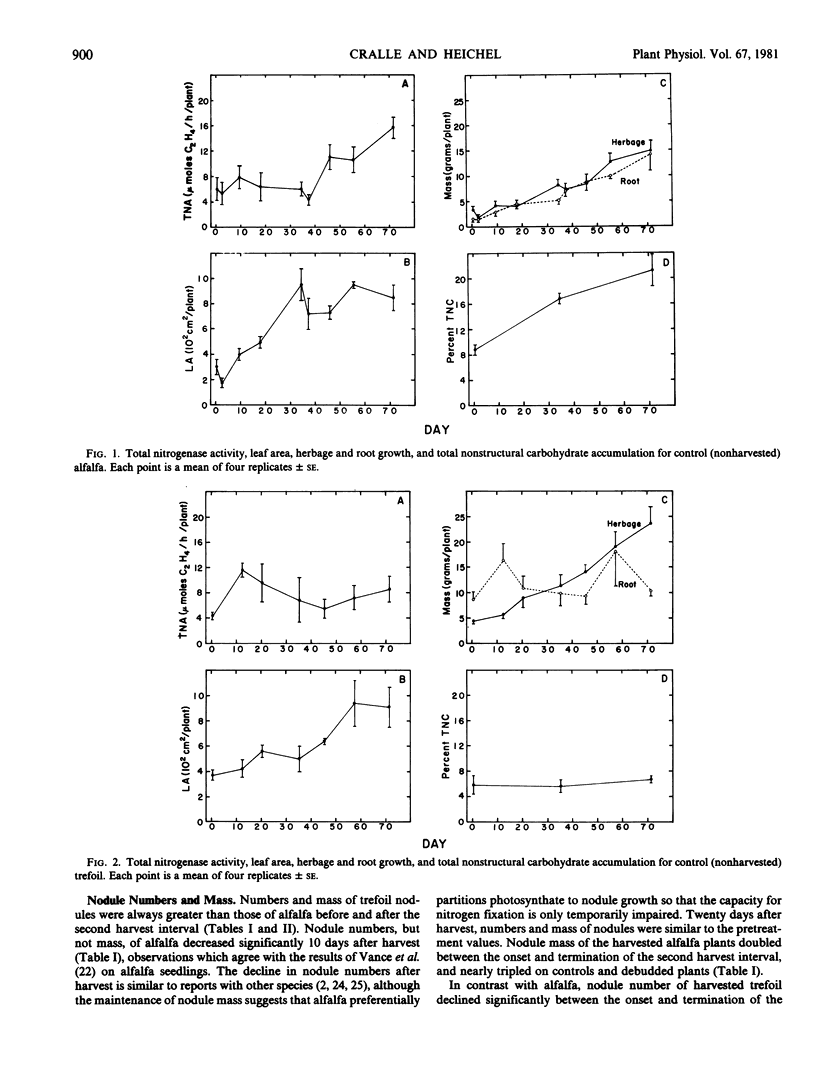
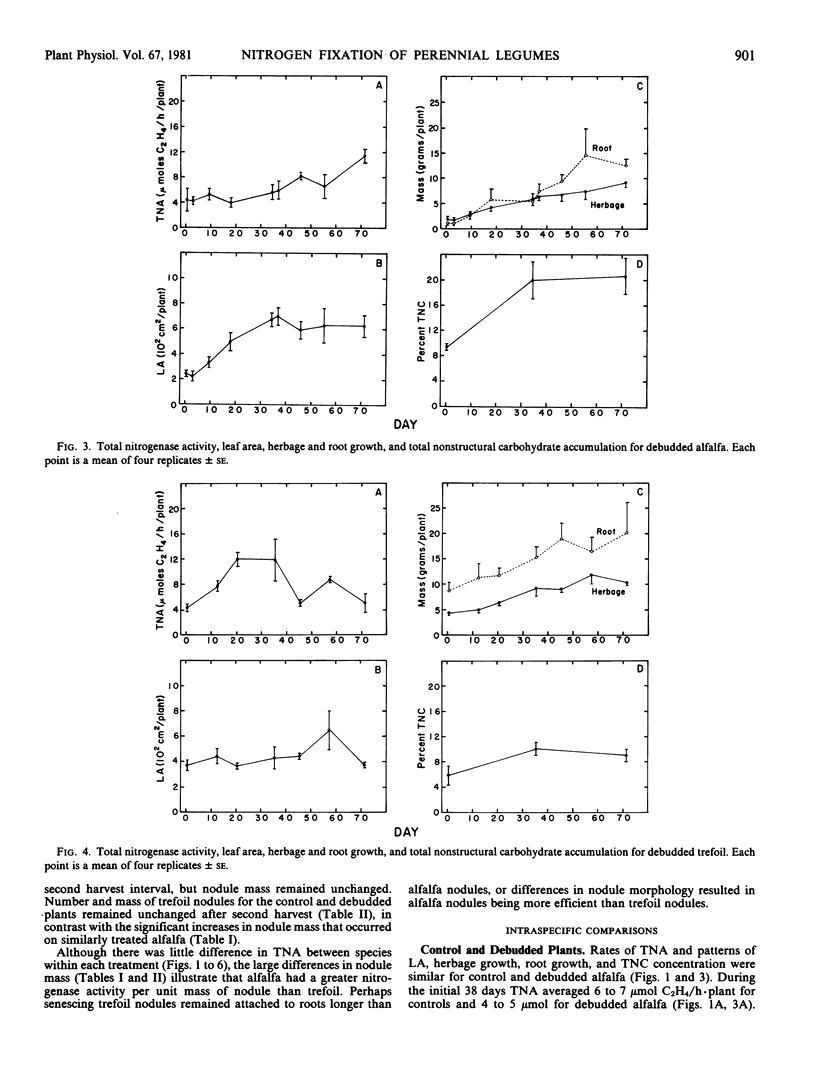
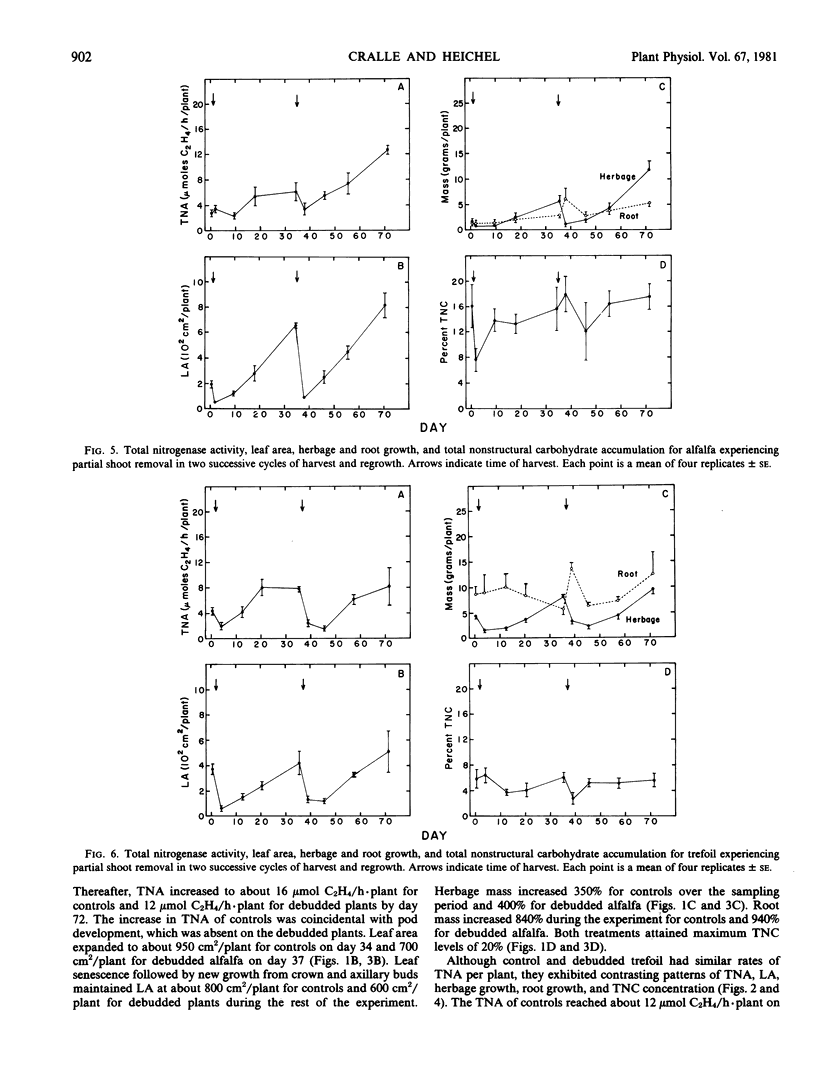
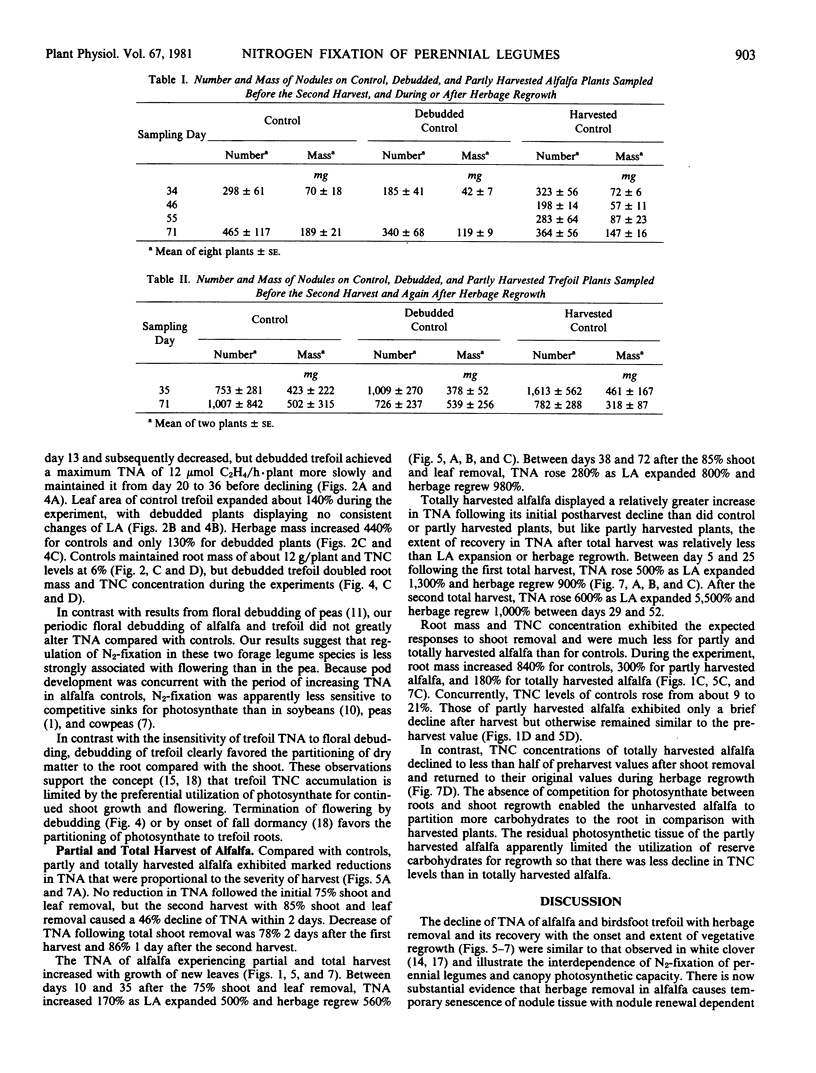


Selected References
These references are in PubMed. This may not be the complete list of references from this article.
- Herridge D. F., Pate J. S. Utilization of net photosynthate for nitrogen fixation and protein production in an annual legume. Plant Physiol. 1977 Nov;60(5):759–764. doi: 10.1104/pp.60.5.759. [DOI] [PMC free article] [PubMed] [Google Scholar]
- Huang C. Y., Boyer J. S., Vanderhoef L. N. Limitation of acetylene reduction (nitrogen fixation) by photosynthesis in soybean having low water potentials. Plant Physiol. 1975 Aug;56(2):228–232. doi: 10.1104/pp.56.2.228. [DOI] [PMC free article] [PubMed] [Google Scholar]
- Mederski H. J., Streeter J. G. Continuous, automated acetylene reduction assays using intact plants. Plant Physiol. 1977 Jun;59(6):1076–1081. doi: 10.1104/pp.59.6.1076. [DOI] [PMC free article] [PubMed] [Google Scholar]


